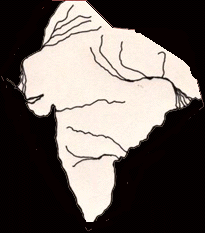| Art History 207~~Fall 1998 |
| Study Questions |
| Week 5 |
|
MIDTERM I--all material to date. |
| The development of the South Indian temple |
|
1. Think about a succession of Deccan and South Indian temples, from about 700 to 1000 AD What are the most important changes in the exterior form of the temple structure, in your opinion? 2. What is the distinctive silhouette of the South Indian temple as exemplified by the Shore Temple and the Rajarajeshvara? 3. What happens to the relative significance of the South Indian gopuram and the vimana after 1000 AD? 4. Here is a chance for your subjective response: how do you respond to the Hindu temple architecture and sculpture of the Hoysala period, such as that of the Keshava Vishnu Temple at Somnathpur? Sites of the Week :
a) Mamallapuram Further readings:Huntington, Susan L. The art of ancient India : Buddhist, Hindu, Jain . New York : Weatherhill, 1985. Bhattacharyya, Tarapada. The canons of Indian art : or, a study on Vastuvidya. Calcutta : Firma KLM Private ltd., 1986. Brown, Percy. Indian architecture (Buddhist and Hindu). Bombay, D. B. Taraporevala Sons [1965- ] The Penguin guide to the monuments of India. London, England; New York, N.Y., USA : Viking, 1989. 2 vols. Michell, George. Architecture and art of southern India : Vijayanagara and the successor states. Cambridge ; New York : Cambridge University Press, 1995. |


